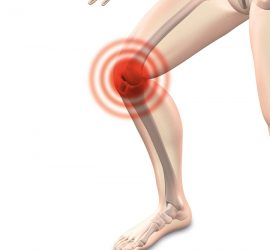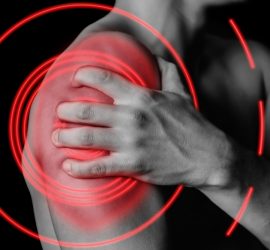Motor Impairment Blog
Pain education increases pain thresholds after exercise
In people with chronic pain, the interactions between exercise and pain are complex. On one hand, regular exercise may be one of the most effective treatments because it consistently improves pain, function and quality of life (Geneen et al., 2017). On the other hand, a single session of exercise, such […]
Can’t run from the past: previous injuries increase risk of leg injury
If someone has suffered a leg injury in the past, they are at an increased risk of having that particular injury again in the future (Murphy et al. 2003). Oftentimes, this second injury is worse than the first. Knowing this, physiotherapists often design rehabilitation programs that target that particular body […]
Are you reliably excitable?
Studies on motor impairments sometimes involve electrophysiological measures to assess the effects of therapeutic interventions. For example, to determine the effect of an exercise program on brain function/excitability, a researcher might measure muscle responses elicited by non-invasive, magnetic stimulation of the brain (transcranial magnetic stimulation). When researchers plan their studies […]
3D architecture of muscles during growth
Body mass and body size increase during growth. Muscles must adapt during growth to deal with these changes. However, little is known about the modifications in the three dimensional geometry (e.g. cross-sectional area, fibre length) of developing muscles (Bénard et al. 2011; Böl et al. 2017). Knowledge about the structural […]
Training pays off…even for the untrained hand 4
Training improves task performance due to improved motor control through practice. Intriguingly, training with one limb can improve task performance with the other, untrained limb. This phenomenon is known as interlimb transfer or cross education, and it is important for rehabilitation when the most affected limb cannot engage in training […]
Training for muscle endurance after stroke
Previous research supports the use of resistance training as a safe and effective exercise intervention for disabled stroke patients (Lee et al. 2010; Pak & Patten 2008). Although resistance training programs for stroke typically target improvements in maximal muscle strength, gains in muscle endurance (i.e. the ability to sustain submaximal […]
Strength training improves the nervous system’s ability to drive muscles 2
Imagine that the New Year has just begun. You’ve made a resolution to improve your physical fitness. In particular, you want to improve your muscle strength. You’ve heard that people with stronger muscles live longer and have less difficulty standing, walking, and using the toilet when they get older (Rantanen […]
Recovery from stroke after more than 20 years
Much can be learned from case studies of individual patients. This has been shown more than once in the field of stroke research. The observations by the illustrious neuroanatomist Dr. Brodal of his own stroke are an example (Brodal 1973). A paper recently published in the Journal of Neurophysiology provides […]
Treatment options for musculoskeletal pain: an overview of current evidence 2
Musculoskeletal pain is the most common cause of disability globally (Vos et al. 2013). It is managed in primary care by a plethora of treatment options, such as self-management advice and education, analgesics, corticosteroid injections, exercise therapy, complementary therapies, and psychosocial interventions. Research suggests that localised musculoskeletal pain frequently coexists in more […]










